Natural Frog Species
Explore the amazing diversity of natural frog species from around the world. With over 7,000 known species, frogs are found on every continent except Antarctica and have adapted to a wide variety of habitats. From tiny glass frogs to massive bullfrogs, these remarkable amphibians showcase nature's incredible diversity.
Bullfrogs
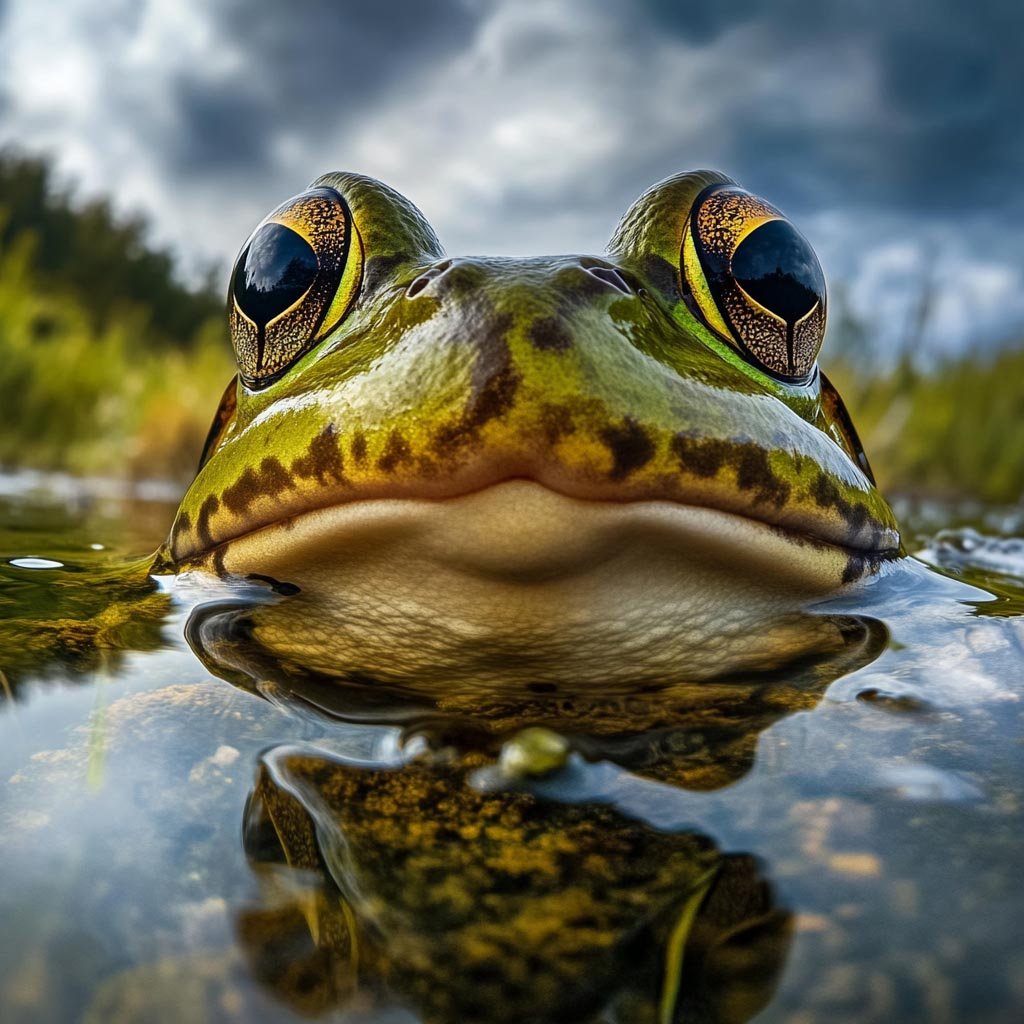
The Giants of North America
The American Bullfrog (Rana catesbeiana) is the largest frog species in North America, growing up to 8 inches long and weighing over 1 pound. These impressive amphibians get their name from their distinctive mating call, which resembles a deep, loud "jug-o-rum" sound that can be heard from great distances.
Key Characteristics:
- Appearance: Green to brown coloration, often with dark brown spots, no ridges along back sides, and a raised ridge from behind the eye to the eardrum
- Habitat: Freshwater environments including ponds, lakes, and marshes across the United States
- Diet: Highly carnivorous, eating insects, fish, small birds, snakes, and even other frogs
- Lifespan: Can live up to 8-10 years in the wild
Bullfrogs are remarkable jumpers, capable of leaping up to 6 feet (about 10 times their body length) in a single bound. They're also known for their voracious appetites and territorial behavior, making them formidable predators in their ecosystems.
Fun Fact: Bullfrogs have a unique adaptation that makes them potentially resistant to certain snake venoms, including those from copperhead and cottonmouth snakes!
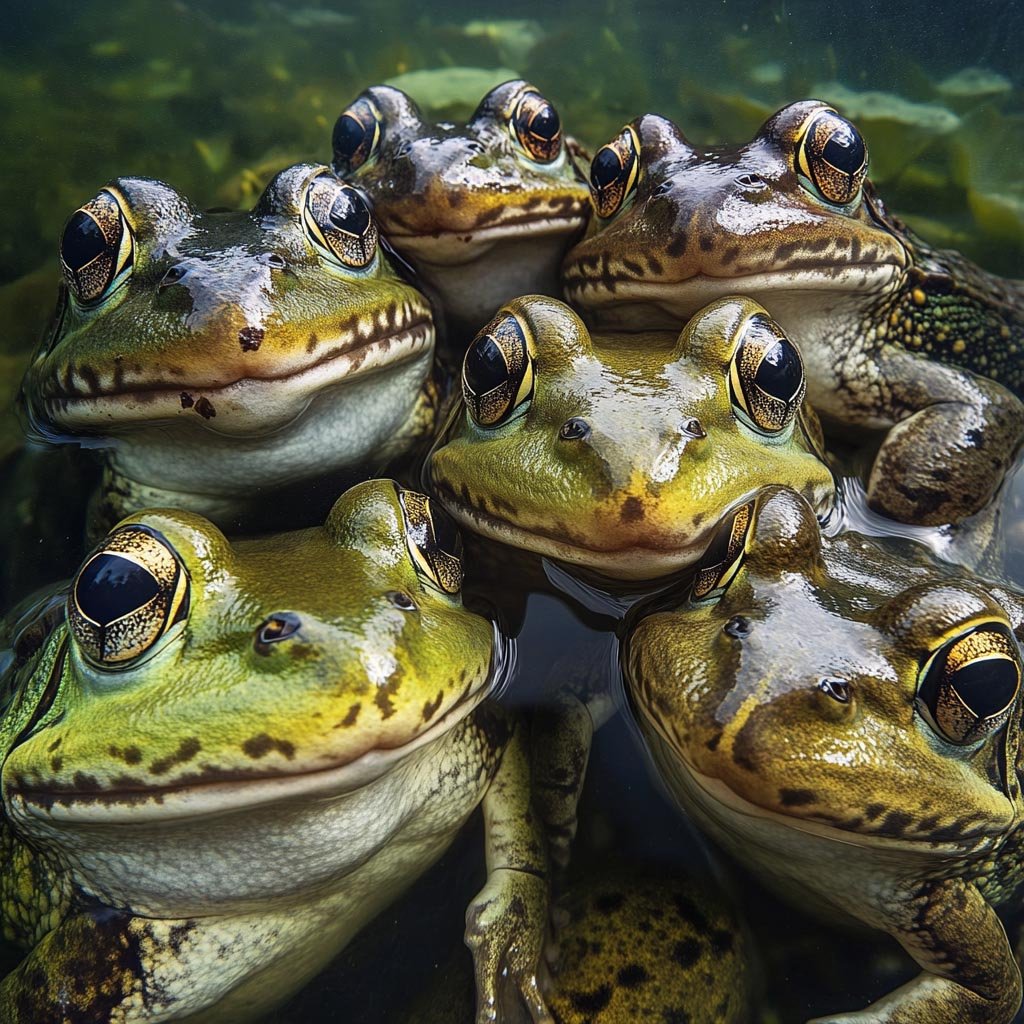
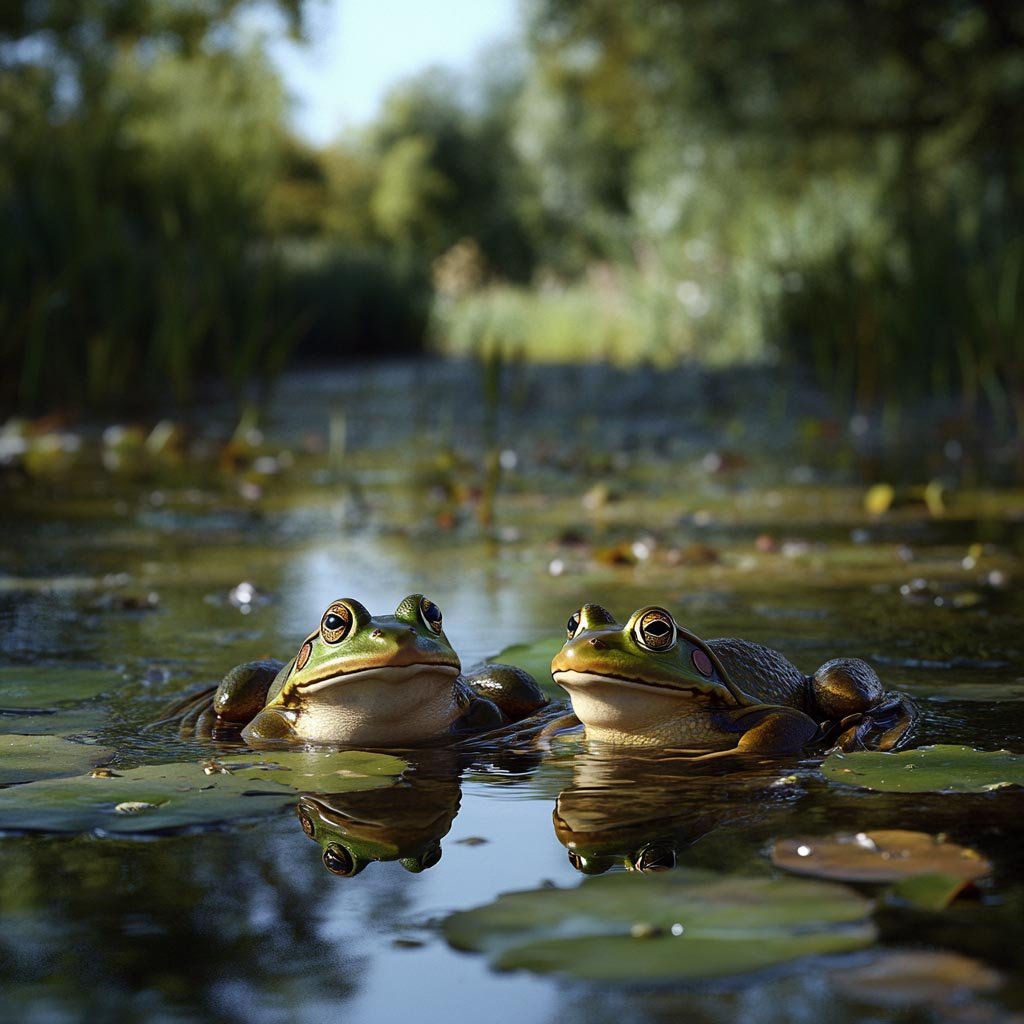
Tree Frogs
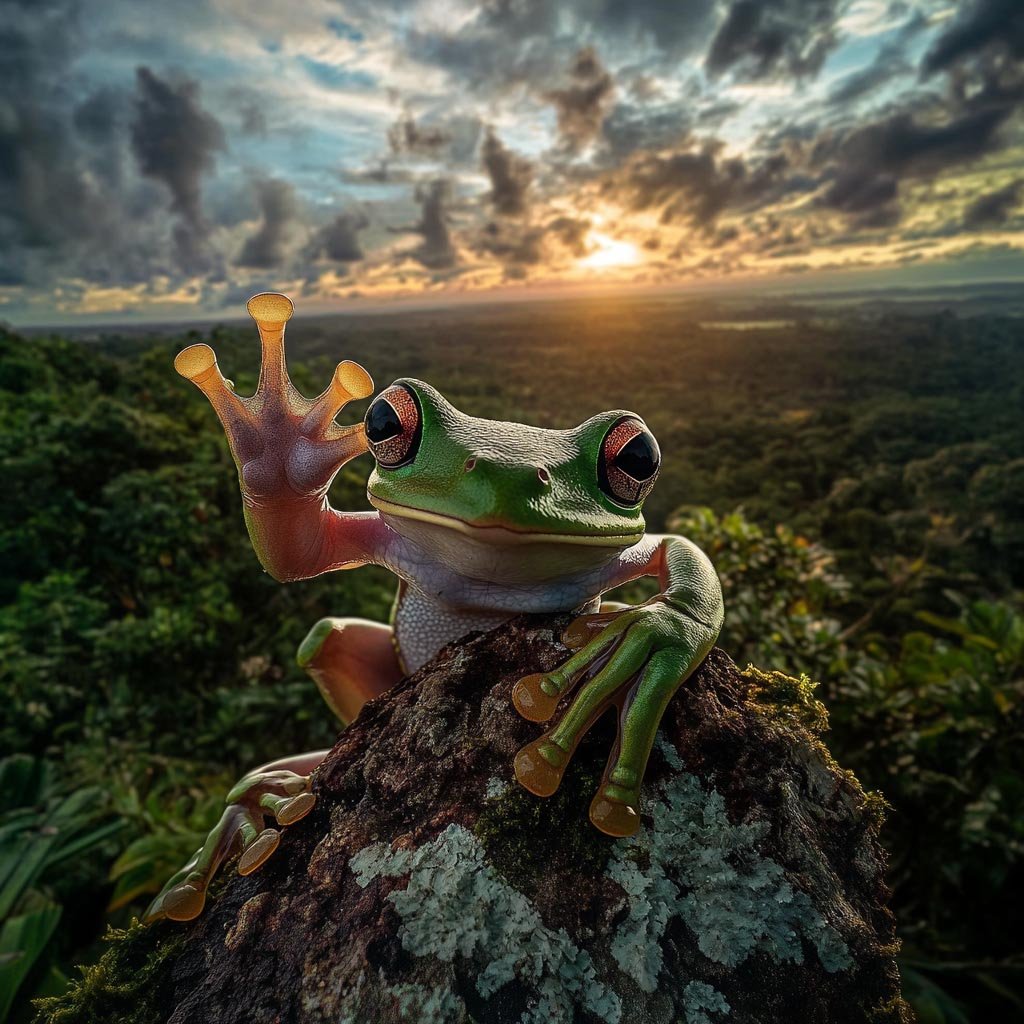
Masters of the Canopy
Tree frogs comprise over 800 species found on all continents except Antarctica. These small, colorful amphibians are specially adapted for arboreal (tree-dwelling) life with unique features that help them thrive in their elevated habitats.
Key Characteristics:
- Appearance: Small size, often brightly colored, with large eyes and slender bodies
- Special Adaptations: Adhesive toe pads that allow them to climb vertical surfaces and cling to leaves
- Habitat: Primarily live in tree canopies in forests and jungles
- Behavior: Many species can change color for camouflage, and they're mostly nocturnal
Tree frogs are remarkable climbers thanks to their specialized toe pads, which contain thousands of tiny, specialized cells that create a slight suction effect. This allows them to cling to smooth surfaces and even glass!
Fun Fact: Some tree frog species have fully webbed toes that enable them to glide between trees, and the red-eyed tree frog has three eyelids on each eye!
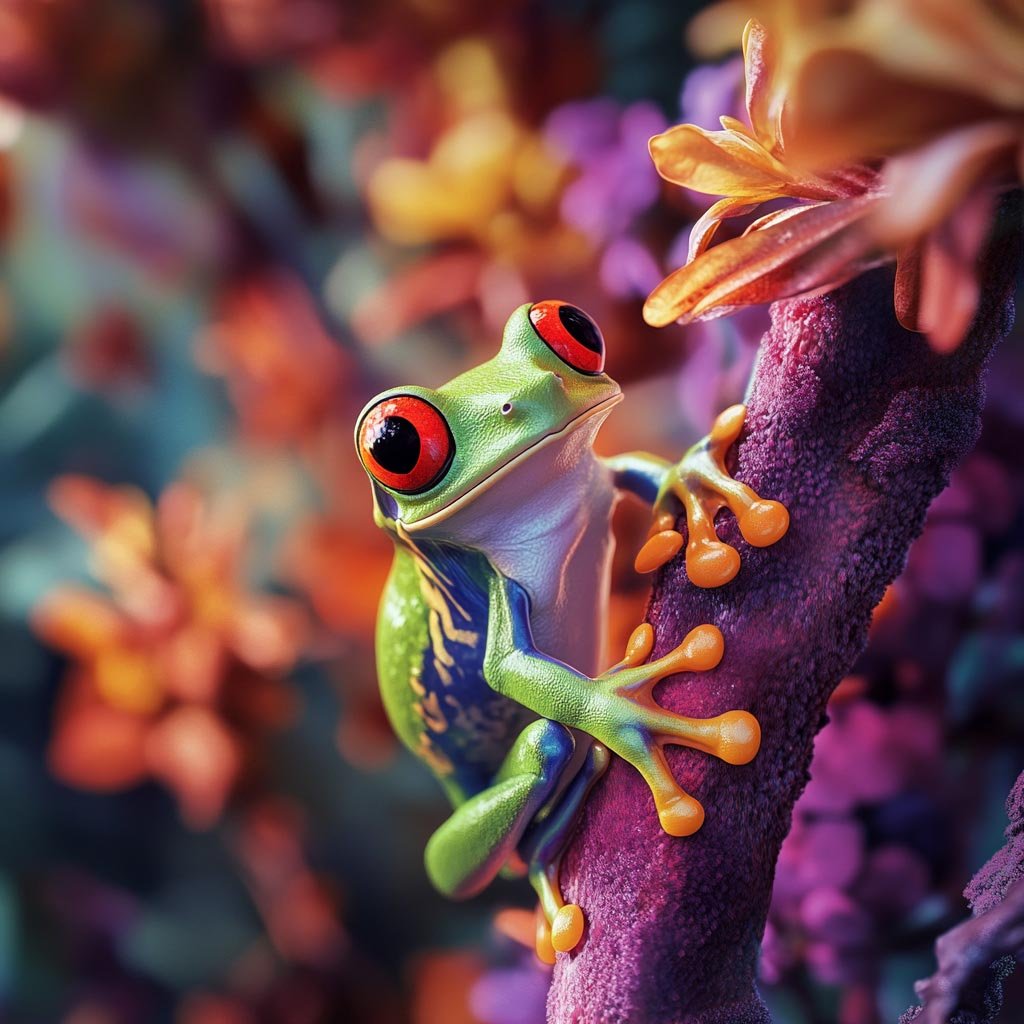
Dart Frogs
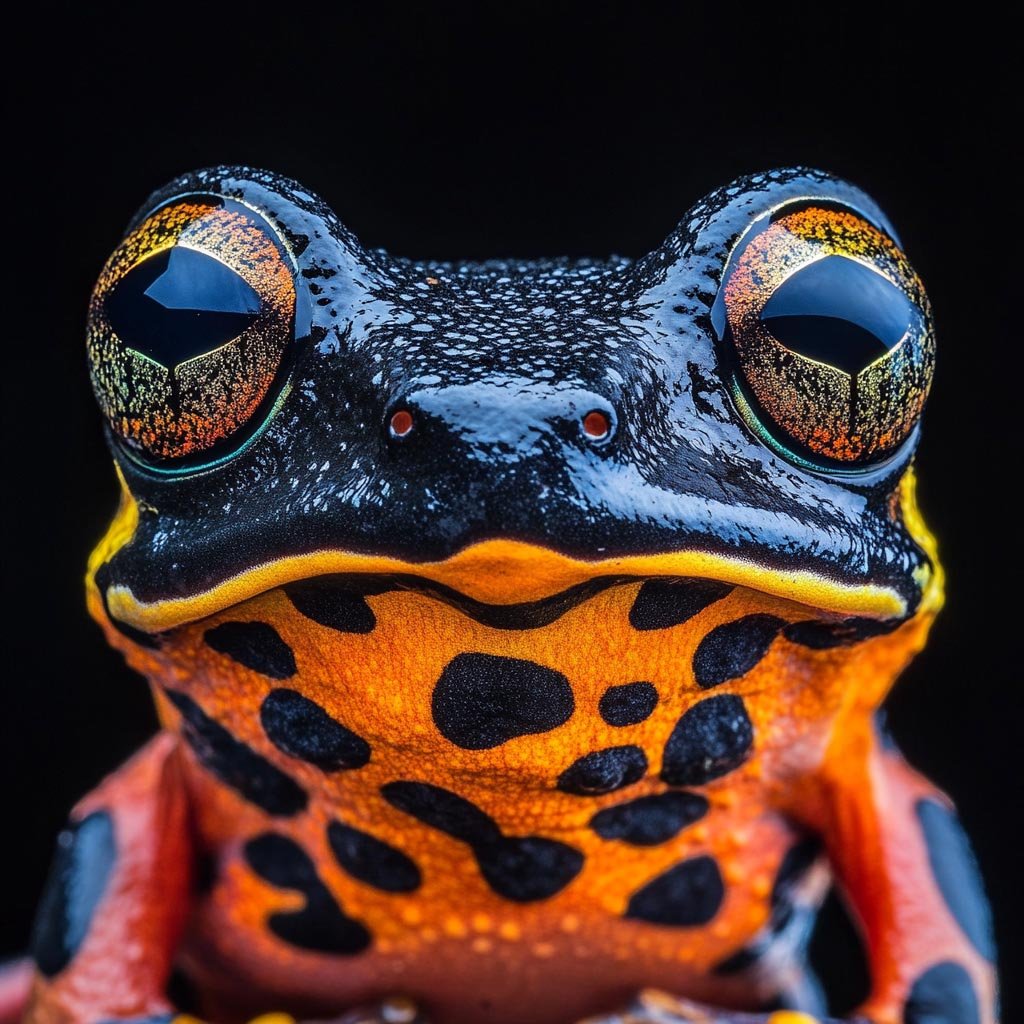
Beautiful but Deadly
Poison dart frogs, found in Central and South America, are among the most colorful and toxic creatures on Earth. Their bright colors serve as a warning to potential predators about their toxicity, a phenomenon known as aposematic coloration.
Key Characteristics:
- Size: Extremely small, most no bigger than a paper clip, weighing around 1 oz
- Appearance: Vibrant colors including blues, yellows, reds, and greens in striking patterns
- Toxicity: Secrete powerful toxins through their skin, with the golden poison dart frog being potentially lethal to humans
- Habitat: Wet, tropical forests of Central and South America
There are approximately 170 species in the poison dart frog family, with varying levels of toxicity. Indigenous peoples have historically used the toxins from certain species to poison the tips of blow darts for hunting, which is how these frogs got their name.
Fun Fact: The golden poison dart frog contains enough toxin to kill 20,000 mice or potentially 10-20 adult humans, making it one of Earth's most toxic species!
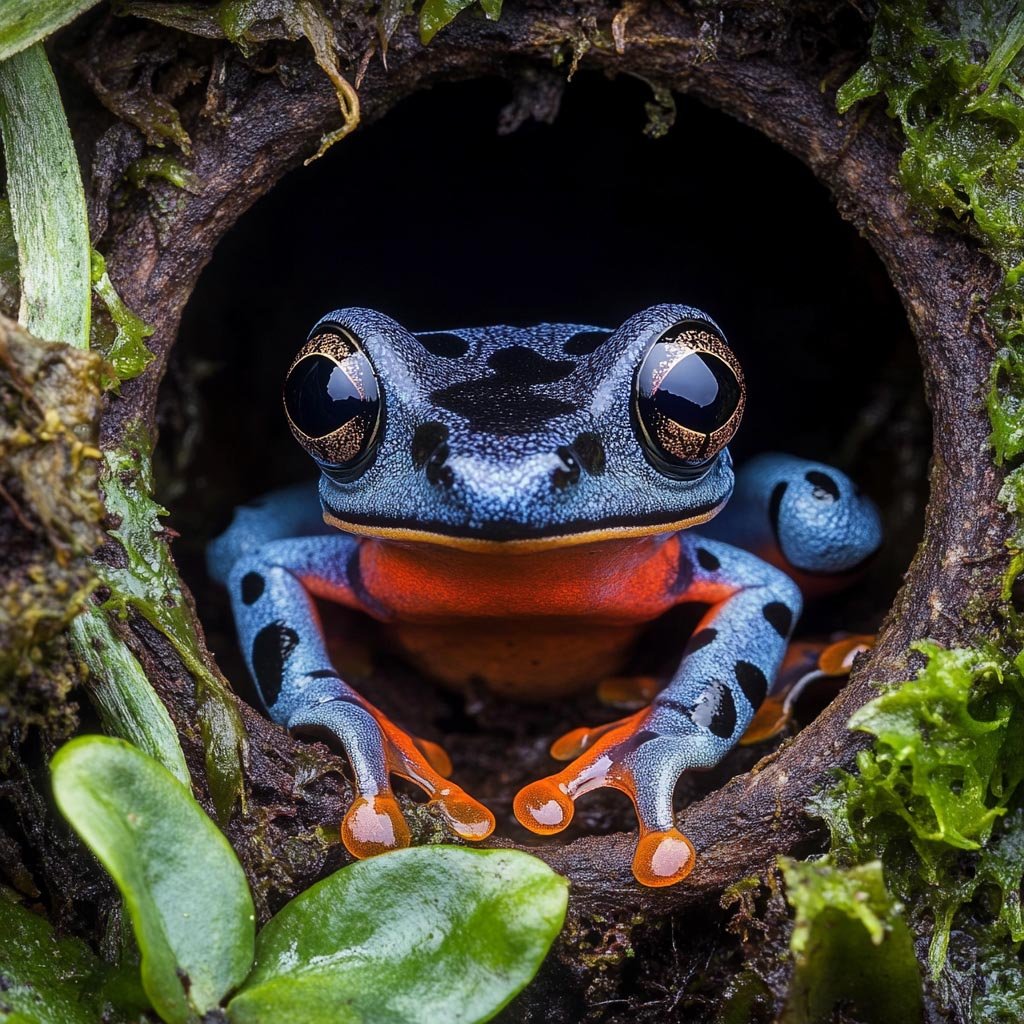
Horn Frogs
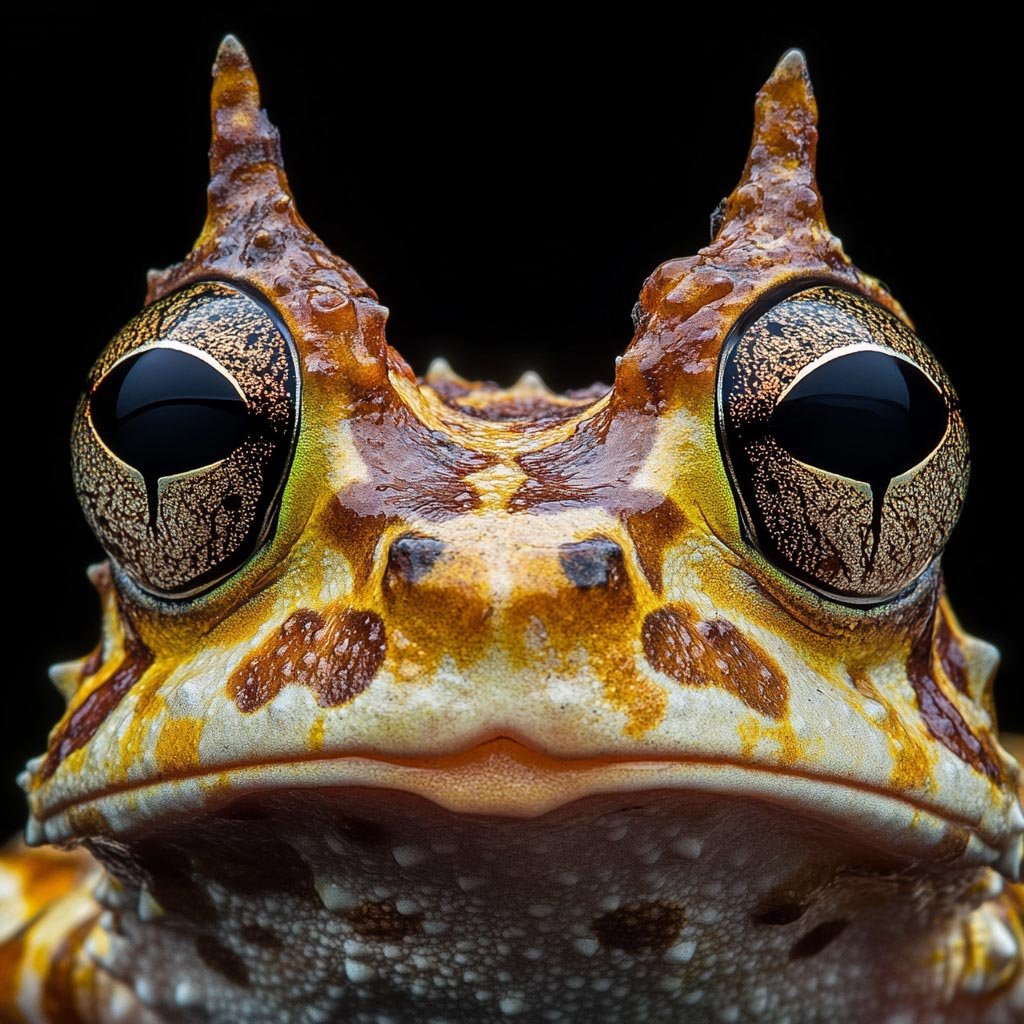
The Pac-Man of the Amphibian World
Horned frogs, scientifically known as Ceratophrys, are commonly called "Pacman frogs" due to their round shape and enormous mouth that resembles the classic video game character. These South American amphibians are known for their voracious appetites and distinctive appearance.
Key Characteristics:
- Appearance: Round, robust body with a disproportionately large head and mouth
- Size: Adults typically grow to 3-6 inches long and can weigh up to 1 pound
- Distinctive Feature: Skin folds above their eyes that resemble "horns"
- Coloration: Usually brown or green, helping them blend into their environment
Horned frogs are ambush predators that bury themselves in leaf litter with just their heads exposed, waiting for prey to wander by. They're capable of consuming animals nearly their own size, including other frogs, small reptiles, and even small mammals!
Fun Fact: Horned frogs are known for their aggressive feeding response—they'll attempt to eat almost anything that moves in front of them, including fingers, so handling them requires caution!
Rocket Frogs
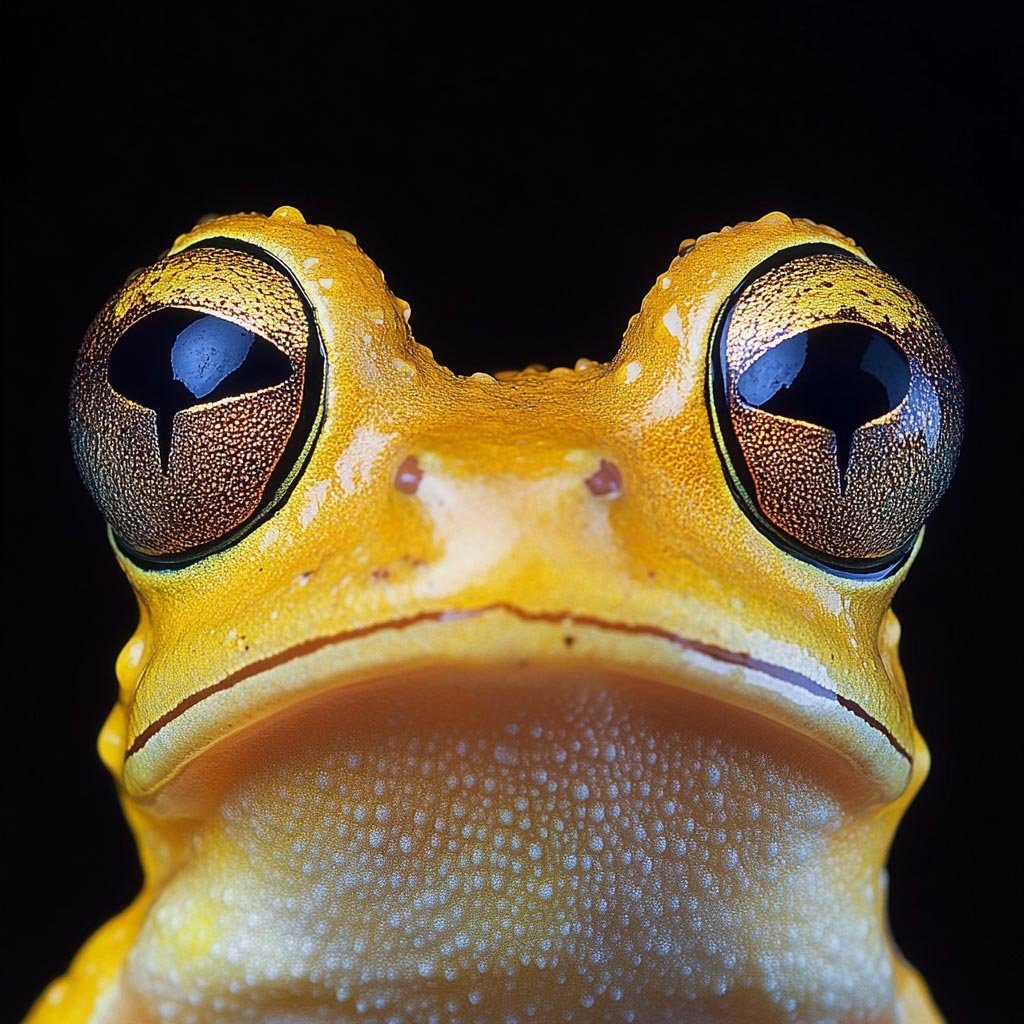
Nature's High Jumpers
The Striped Rocket Frog (Litoria nasuta) is a medium-sized frog species native to coastal areas of Australia. As their name suggests, these remarkable amphibians are known for their exceptional jumping ability, which helps them escape predators and navigate their environment.
Key Characteristics:
- Size: Medium-sized, growing up to 5.5 cm (approximately 2.2 inches) in length
- Appearance: Brown, reddish-brown, or yellow-brown back with distinctive dark brown longitudinal stripes
- Physical Features: Extremely long legs, streamlined body, and partially webbed toes
- Jumping Ability: Can leap approximately 6.5 feet into the air—an incredible distance for their size
Rocket frogs have evolved powerful leg muscles that allow them to make impressive vertical and horizontal jumps. This adaptation helps them quickly escape from danger and efficiently navigate through their habitat.
Fun Fact: If humans could jump like rocket frogs relative to their body size, we would be able to leap over a five-story building in a single bound!
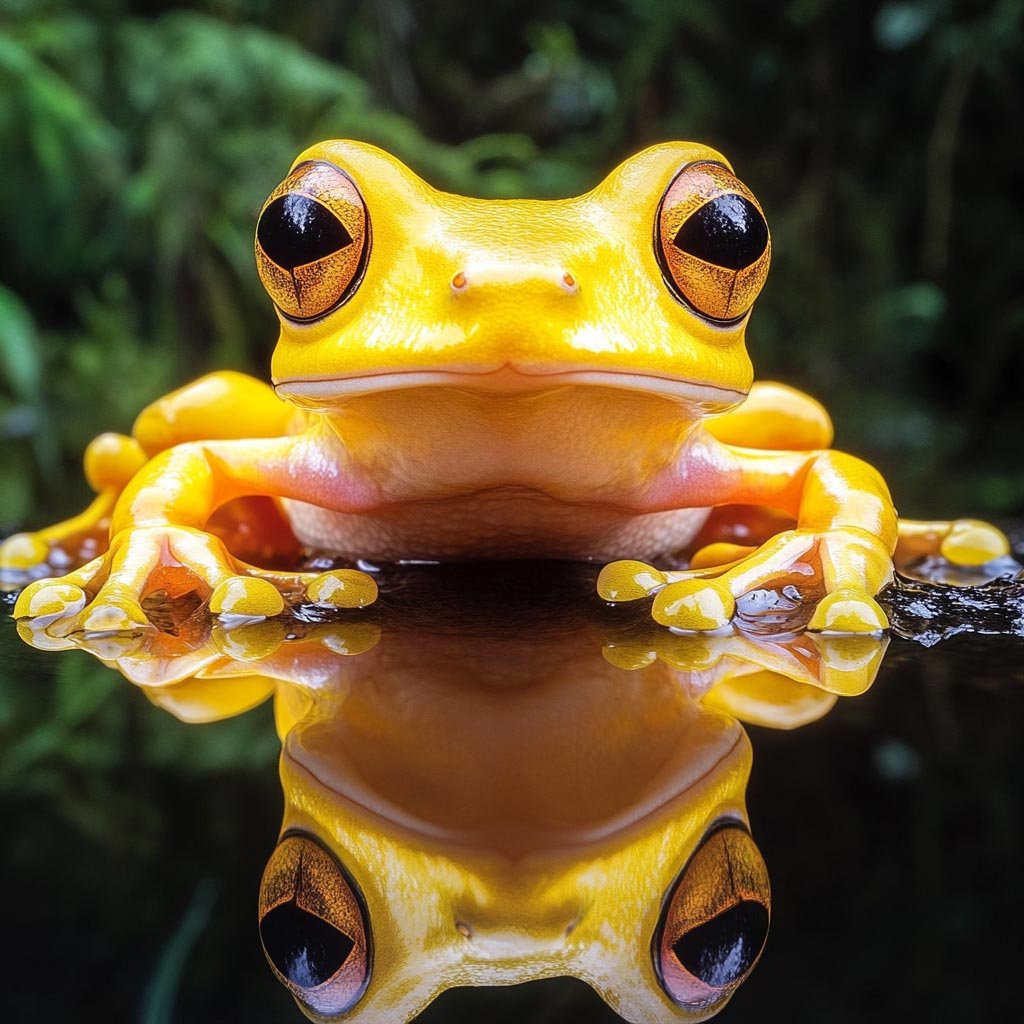
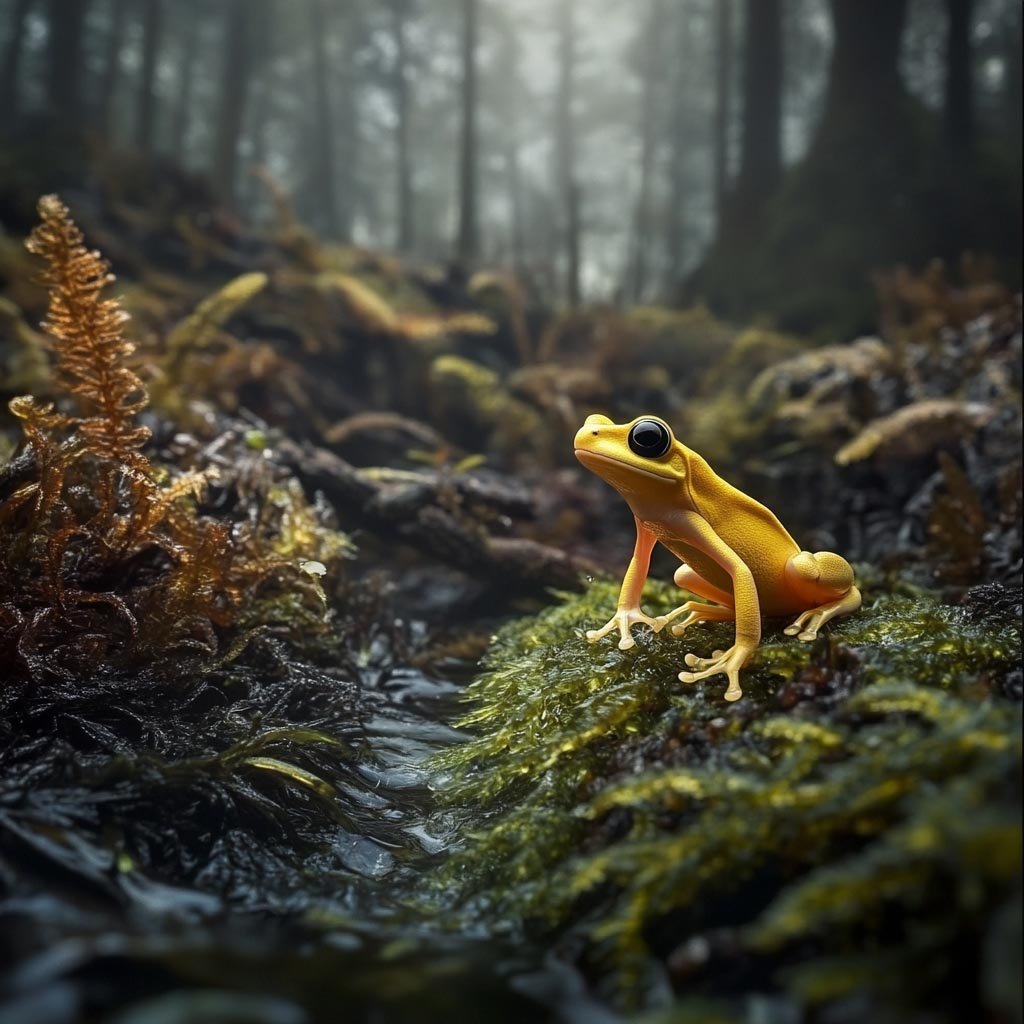
Glass Frogs
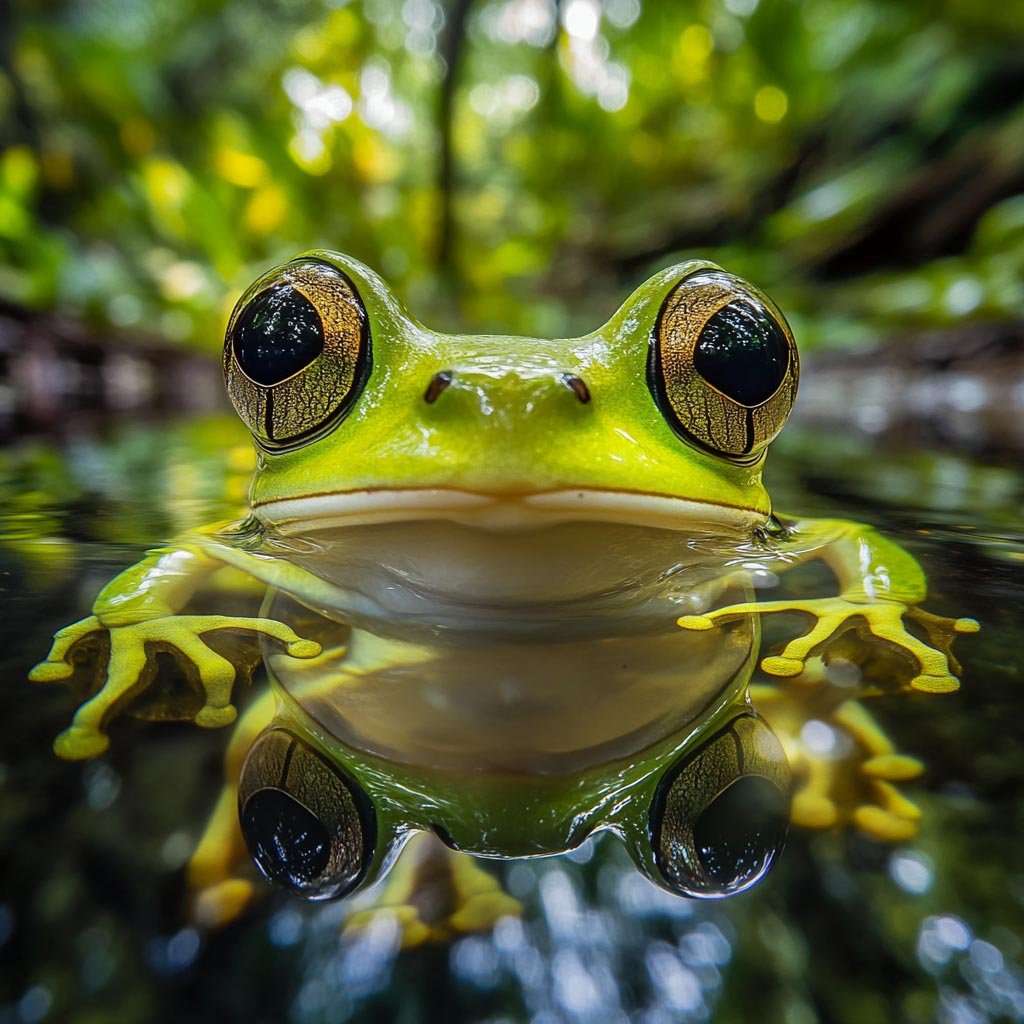
Nature's Window to Life
Glass frogs are a fascinating family of amphibians found exclusively in Central and South America. Their most distinctive feature is their translucent belly skin, which allows you to see their internal organs, including their beating heart, liver, and digestive tract.
Key Characteristics:
- Size: Small, typically ranging from 3-7.5 cm (1.2-3.0 inches) in length
- Appearance: Pale green body color with translucent belly, small yellow suction pads on fingers and toes
- Habitat: Rainforests and mountainous forests in Central and South America
- Behavior: Nocturnal and arboreal (tree-dwelling), often found near forest streams
Glass frogs are primarily active at night, when they emerge to hunt for small insects like crickets, moths, flies, and spiders. During the day, they rest on the undersides of leaves, where their green coloration helps them blend in with the foliage.
Fun Fact: Scientists believe the glass frog's transparent belly might be an advanced form of camouflage—when light passes through their bodies while they rest on leaves, they cast less of a shadow, making them harder for predators to spot!
Frog Habitats Around the World

Where Frogs Live
Frogs are incredibly adaptable and can be found in a wide variety of habitats:
- Rainforests: Home to the greatest diversity of frog species
- Ponds and Lakes: Perfect for aquatic species like bullfrogs
- Trees: Tree frogs have specialized toe pads for climbing
- Deserts: Some species can survive in arid conditions by burrowing
- Mountains: Frogs can be found at elevations over 13,000 feet
- Urban Areas: Many species adapt to human environments
Frog Anatomy
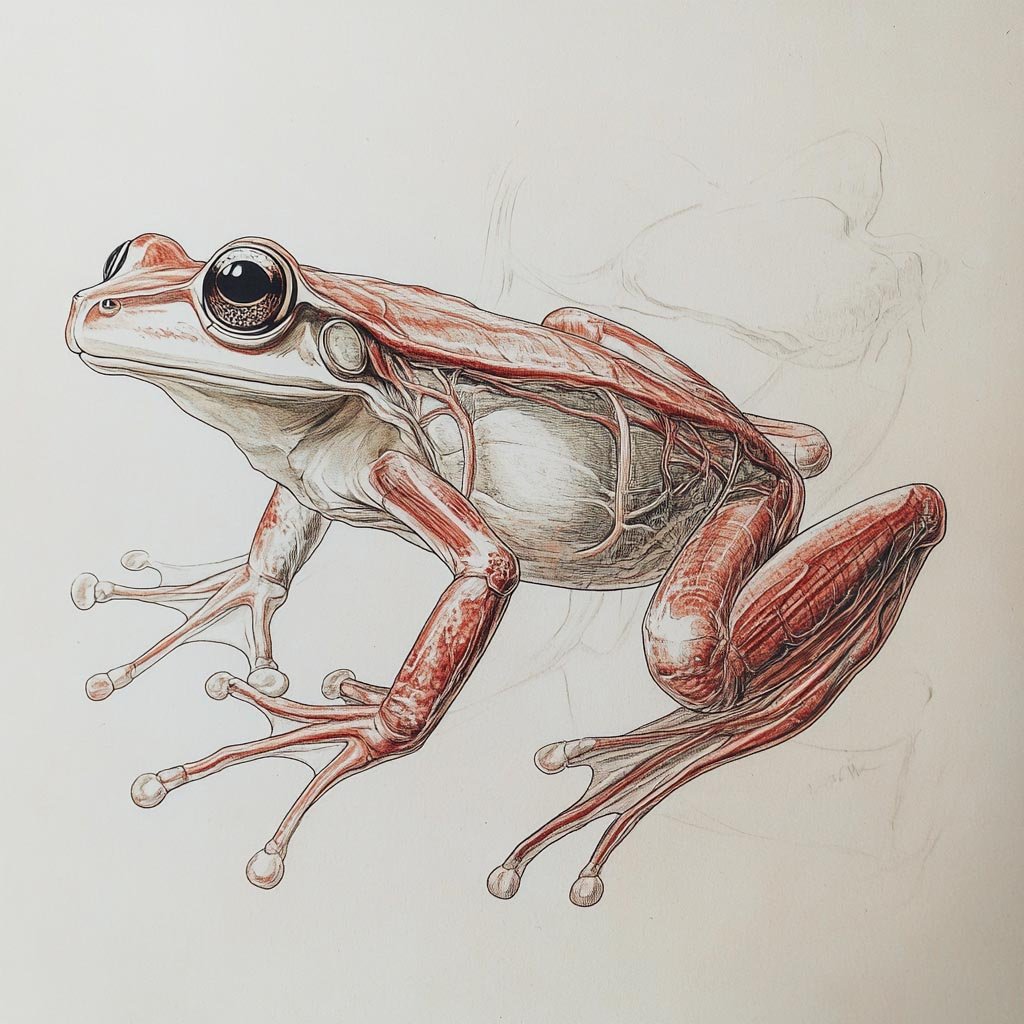
Amazing Adaptations
Frogs have several unique anatomical features:
- Skin: Permeable skin that can absorb water and oxygen
- Legs: Powerful hind legs for jumping and swimming
- Eyes: Bulging eyes that provide 360-degree vision
- Tongue: Sticky, extendable tongue for catching prey
- Ears: Tympanic membranes (eardrums) on the sides of their heads
- Vocal Sacs: Used by males to amplify their calls
